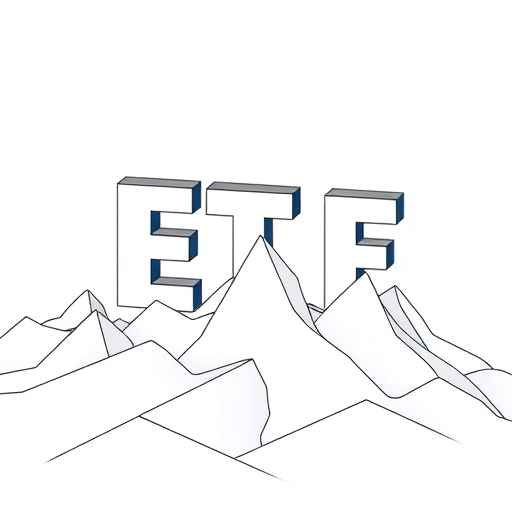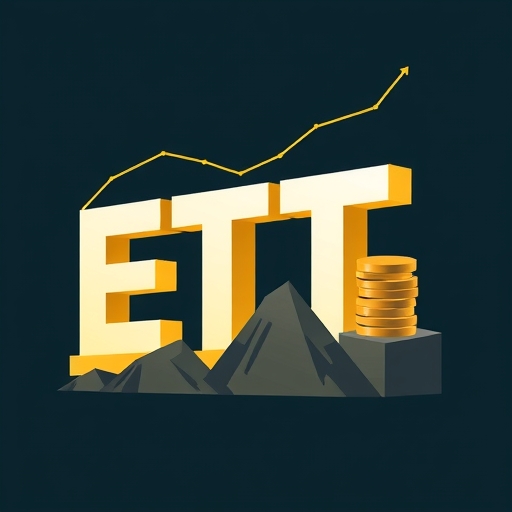Understanding Leveraged ETFs: Amplified Returns, Elevated Risks, and Smart Strategies
Have you ever wondered how some investment tools promise to multiply your daily market gains, offering a turbocharged ride compared to traditional investments? We’re talking about Leveraged Exchange Traded Funds (LETFs). These are powerful financial instruments designed to amplify the daily returns of an underlying index or asset. But with amplified potential for gains comes an equally amplified potential for losses. Unlike traditional Exchange Traded Funds (ETFs) that track their underlying index at a 1:1 ratio, LETFs aim to achieve magnified daily performance ratios, commonly 2:1 or 3:1. 
Understanding the intricate mechanics, inherent risks, and specific suitability of LETFs is crucial for any investor considering these high-octane instruments. In this comprehensive guide, we will delve into what LETFs are and how they function, examine their associated risks and costs, explore their strategic advantages and ideal applications, discuss who should and shouldn’t consider investing in them, and touch upon their tax implications and the role of technology in navigating their complexities. By the end, you will have a clearer picture of whether these sophisticated tools align with your financial goals and risk tolerance.
What Are Leveraged ETFs and How Do They Function?
Leveraged Exchange Traded Funds (LETFs) are a unique class of tradable financial instruments that stand apart from their conventional ETF counterparts. While a traditional ETF simply mirrors the performance of an underlying index, like the S&P 500 Index or Nasdaq 100 Index, LETFs take this a step further. Their core objective is to amplify the daily returns of that index, typically by a factor of two (2x) or three (3x). So, if an index goes up by 1% in a day, a 2x LETF tracking it aims to go up by 2%, and a 3x LETF aims for a 3% gain. 
How do they achieve this amplification? LETFs utilize a combination of financial derivatives and borrowed funds. Derivatives are financial contracts whose value is derived from an underlying asset or index. Common derivatives used by LETFs include options contracts, futures contracts, and total return swaps. For instance, futures contracts allow the fund to agree to buy or sell an asset at a predetermined price on a future date, providing magnified exposure without owning the underlying asset directly. This method is often referred to as “synthetic replication,” which can be more efficient than direct borrowing for market exposure. To achieve their leveraged goals, these funds employ various sophisticated financial instruments, including: – Options contracts, which give the holder the right, but not the obligation, to buy or sell an underlying asset at a specified price. – Futures contracts, which are agreements to buy or sell an asset at a predetermined price at a specified time in the future. – Total return swaps, where one party pays a fixed or floating rate and the other party pays the total return of an asset, including income and appreciation.
A critical, perhaps the most critical, aspect of LETFs is their daily rebalancing. This means the fund’s leverage ratio is reset at the end of each trading day. They are designed to track daily changes in the underlying index, not longer-term returns. Why is this important? Over time, due to the effect of compounding, the performance of an LETF can significantly diverge from a simple multiple of the underlying index’s returns. This daily reset mechanism makes them highly unsuitable for long-term holding strategies, as performance can become unpredictable and losses can be significantly compounded. For example, if an index moves up 1% one day and down 1% the next, a 2x LETF might not return to its original value, demonstrating the impact of compounding on a daily reset.
| Day | Underlying Index Change | Underlying Index Value (Start: 100) | 2x LETF Daily Change | 2x LETF Value (Start: 100) |
|---|---|---|---|---|
| Start | – | 100.00 | – | 100.00 |
| Day 1 | +1% | 101.00 | +2% | 102.00 |
| Day 2 | -1% | 99.99 | -2% | 99.96 |
| Day 3 | +1% | 100.99 | +2% | 101.96 |
As this simple illustration shows, even when the underlying index recovers its losses over a few days, the leveraged ETF may not. This effect is compounded in volatile or sideways markets, making them unsuitable for holding periods longer than a single day.
Beyond funds designed to profit from rising markets (bullish LETFs), there are also leveraged inverse ETFs. These are a specific type of LETF designed to profit from market declines. They aim for inverse multiples of the underlying index’s daily performance. For example, a -2x inverse LETF would aim to gain 2% if its underlying index falls by 1% in a single day. This offers investors an opportunity to capitalize on falling markets, but with the same amplified risks and daily rebalancing complexities. 
The Double-Edged Sword: Risks, Costs, and Regulatory Scrutiny of LETFs
While the promise of amplified gains from LETFs is alluring, it’s crucial to understand that they are inherently high-risk investments. The very mechanism that amplifies gains also amplifies losses, making them highly sensitive to market fluctuations. If the underlying index moves against your position, your losses can quickly escalate beyond what you would experience with a traditional ETF.
One of the primary risks stems from the daily rebalancing and the resulting compounding effect. As we discussed, LETFs are designed for daily performance. Over longer periods, even just a few days or weeks, their returns can significantly diverge from the stated multiple of the underlying index’s performance. This divergence is particularly pronounced in volatile, sideways-moving markets. Imagine an index that goes up 1% one day, down 1% the next, up 1% again, and so on. Over several days, the index might be flat, but a leveraged ETF tracking it could show significant losses due to the compounding of daily rebalancing adjustments.
Beyond performance divergence, LETFs also come with higher costs. They typically incur higher management fees, transaction costs, and borrowing expenses compared to regular ETFs. While traditional ETFs might have expense ratios well below 0.5%, LETFs often feature expense ratios exceeding 1%. These higher costs can eat into your returns, especially during periods of lower volatility or if held for longer than a single day. Investors considering LETFs should be aware of the various costs that can impact their overall returns. These typically include: – Higher management fees, often significantly exceeding those of traditional ETFs. – Increased transaction costs due to frequent buying and selling of derivatives for daily rebalancing. – Borrowing expenses, as the funds utilize borrowed capital to achieve their leverage.
It’s also important to note the ongoing regulatory concerns surrounding LETFs. Regulatory bodies, such as the Securities and Exchange Commission (SEC), which first permitted LETFs in 2006, have consistently expressed concerns about their potential to magnify overall market volatility and their unsuitability for most investors. The SEC continues to advise against their use as long-term investments due to their unpredictable long-term performance and capacity to compound losses. This regulatory scrutiny is a persistent feature for Leveraged ETFs, underscoring their complexity and risk profile.
Comparison: Traditional ETFs vs. Leveraged ETFs
| Feature | Traditional ETFs | Leveraged ETFs |
|---|---|---|
| Return Goal | 1:1 ratio to underlying index daily/long-term | 2x or 3x the underlying index’s daily return |
| Leverage Used | No leverage | Yes, uses derivatives (futures, options, swaps) and borrowed funds |
| Rebalancing | Not daily; tracks long-term performance | Daily rebalancing (resets leverage daily) |
| Compounding Effect | Minimal for long-term holding | Significant, can lead to divergence from simple multiple over time |
| Risk Level | Moderate to low (depending on underlying) | High Risk (amplified gains & losses) |
| Typical Holding Period | Long-term | Short-term / Intraday |
| Expense Ratios | Generally lower (<0.5%) | Generally higher (>1%) |
| Regulatory View | Generally suitable for broad investors | SEC expresses concerns, advises against long-term holding |
Strategic Advantages and Ideal Applications of Leveraged ETFs
Despite the inherent risks, LETFs do offer distinct advantages for specific trading strategies and investor profiles. For the right investor, they can be powerful tools in a short-term trading arsenal. Their primary appeal lies in the potential for significantly amplified short-term gains. When market movements align with your investment direction, LETFs can deliver substantial returns in a short period, far exceeding what a non-leveraged investment might achieve.
Another key advantage is efficient capital deployment. LETFs allow investors to gain substantial market exposure with a comparatively lower initial investment. Instead of buying a large quantity of individual stocks or a traditional ETF, you can use an LETF to achieve the same or even greater exposure to market movements with less upfront capital. This can free up capital for other investments or simply reduce the initial outlay required to take a significant market position.
LETFs also boast high liquidity on major exchanges, making them accessible for active trading strategies. This liquidity ensures that traders can enter and exit positions quickly, which is essential for short-term speculation where timing is critical. This ease of trading, combined with their magnified potential, makes them attractive for those looking to capitalize on rapid market shifts.
Furthermore, LETFs can provide diversification and hedging opportunities. Particularly, inverse LETFs, which aim to profit from declining markets, can be used to protect portfolios during market downturns. For instance, if you hold a long position in a broad market index, you might use a leveraged inverse ETF to hedge against a potential short-term decline, effectively offsetting some of your portfolio losses. They also enable investors to capitalize on both rising (bullish) and falling (bearish) markets, offering flexibility in different market conditions.
| Strategic Advantage | Description |
|---|---|
| Amplified Short-Term Gains | Potential to achieve significantly higher returns on daily market movements compared to non-leveraged investments. |
| Efficient Capital Deployment | Gain substantial market exposure with a relatively lower initial capital investment. |
| High Liquidity | Ease of entry and exit due to active trading on major exchanges, crucial for short-term strategies. |
| Hedging Opportunities | Ability to protect existing portfolios against short-term market downturns, especially with inverse LETFs. |
| Flexibility in Market Conditions | Opportunity to capitalize on both bullish (rising) and bearish (falling) market trends. |
These advantages highlight why LETFs, despite their risks, are valuable tools for the sophisticated short-term trader.
Investor Suitability: Who Should (and Shouldn’t) Engage with Leveraged ETFs
Given their unique mechanics and elevated risk profile, LETFs are certainly not for everyone. Understanding investor suitability is paramount before considering these instruments. We’ve established that LETFs are inherently high-risk, making them primarily designed for a very specific type of investor: experienced, active traders who engage in short-term or intraday speculation and can closely monitor market movements.
These are individuals who possess a deep understanding of market dynamics, technical analysis, and risk management strategies. They are comfortable with significant risk exposure and have the discipline to execute trades quickly and manage potential losses. For such traders, LETFs can be valuable tools for capitalizing on brief market trends or hedging existing positions.
Conversely, LETFs are unequivocally unsuitable for long-term holding strategies. Their daily reset mechanism and compounding effects render them unpredictable and potentially detrimental for investors with a buy-and-hold philosophy. Losses can be significantly compounded over time, and the fund’s performance can diverge dramatically from what one might expect based on the underlying index’s long-term returns. If you are a beginner investor, someone with a low-to-moderate risk tolerance, or an individual seeking long-term growth for retirement or other distant financial goals, traditional ETFs or diversified portfolios of stocks and bonds remain a far more suitable and safer path. To summarize investor suitability, consider the following profiles: – Suitable Users: Experienced traders, active speculators, those with high risk tolerance, and individuals who understand complex derivatives and market timing. – Unsuitable Users: Long-term investors, beginners, individuals with low or moderate risk tolerance, and those looking for stable growth or retirement planning.
The SEC’s consistent warnings against using LETFs as long-term investments reinforce this point. We cannot stress enough that these instruments are for speculation, not investment growth over extended periods. Think of them more like a finely tuned, high-performance race car designed for short, fast bursts, rather than a reliable family sedan built for long journeys. 
The Role of Technology and Tax Implications in Leveraged ETF Investing
Navigating the complexities of LETFs can be challenging, but modern technology is increasingly stepping in to assist investors. AI-powered tools and apps, such as “Bobby” mentioned in our source data, are emerging to help investors with several critical aspects. These tools can provide valuable assistance in risk assessment, offering insights into the potential volatility and downside of specific LETFs. They also offer real-time alerts, notifying traders of significant market movements or conditions that might impact their leveraged positions. Furthermore, comprehensive portfolio tracking features can help investors monitor their LETF holdings closely, ensuring they remain within their risk tolerance and strategic objectives. These technological aids can be invaluable for active traders who need to make informed decisions rapidly.
Beyond the operational aspects, it’s crucial to understand the tax implications of LETFs. Due to their short-term trading nature and daily rebalancing, gains from LETFs are typically classified as short-term capital gains. These are taxed at an investor’s ordinary income tax rate, which is generally higher than the long-term capital gains rate that applies to investments held for over a year. This can make LETFs less tax-efficient for many investors compared to long-term equity investments.
The “wash sale rule” can also apply to LETF trading. This rule prevents investors from claiming a tax deduction for a loss on a security if they repurchase a substantially identical security within 30 days before or after the sale. Given the frequent trading often associated with LETFs, traders must be mindful of this rule to avoid disallowed losses.
However, there’s a nuanced point for some futures-based LETFs. Certain funds may benefit from IRS Section 1256, which applies to regulated futures contracts and some other derivatives. Under this rule, 60% of gains or losses are treated as long-term capital gains/losses and 40% as short-term, regardless of the actual holding period. This 60/40 rule can offer potentially more favorable tax treatment for the underlying derivatives within these specific LETFs, even if the fund is traded short-term. Always consult a tax professional for personalized advice on your specific circumstances.
| Tax Aspect | Description | Implication for LETFs |
|---|---|---|
| Capital Gains Classification | How profits from investments are categorized for tax purposes. | Typically short-term capital gains (held <1 year), taxed at ordinary income rates, which are often higher. |
| Wash Sale Rule | Prevents claiming a loss if a substantially identical security is repurchased within 30 days. | Frequent trading can trigger this rule, disallowing losses for tax purposes. |
| IRS Section 1256 | Special tax treatment for certain regulated futures contracts (60% long-term, 40% short-term). | Some futures-based LETFs may qualify, potentially offering more favorable tax treatment, regardless of holding period. |
Understanding these tax nuances is vital, and consulting a tax professional is always recommended for personalized advice.
A real-world example of an LETF is the Direxion Daily Financial Bull 3x Shares (FAS) ETF. This fund aims to deliver 300% of the daily performance of financial sector indices, such as the Russell 1000 Financial Services Index. It holds stocks of major financial companies like JPMorgan Chase & Co. (JPM) and Visa (V), or their derivatives, to achieve its leveraged objective. We also see the emergence of leveraged crypto ETFs for assets like Bitcoin, magnifying daily price changes, bringing the same amplified risks and opportunities to the volatile cryptocurrency market.
Conclusion
Leveraged Exchange Traded Funds (LETFs) are sophisticated financial instruments built for precision short-term trading rather than long-term investment. While they offer the compelling possibility of significantly amplified returns, this power comes with correspondingly amplified risks, higher costs, and complex mechanics like daily rebalancing that can lead to unpredictable outcomes over extended periods. For the disciplined, experienced trader with a keen understanding of market dynamics and robust risk management strategies, LETFs can be valuable tools for short-term speculation or hedging.
However, for the majority of investors, particularly those with a long-term horizon, a lower risk tolerance, or limited market expertise, traditional ETFs and a diversified portfolio remain a far more suitable and safer path to financial growth. Always prioritize thorough research and a clear understanding of your risk tolerance before engaging with these powerful, double-edged instruments. Remember, knowledge is your most valuable asset in the markets.
Disclaimer: This article is for educational and informational purposes only and should not be considered as financial advice. Investing in Leveraged ETFs involves substantial risk, including the potential loss of principal. Always consult with a qualified financial professional before making any investment decisions.
Frequently Asked Questions (FAQ)
Q: What is the primary difference between a traditional ETF and a Leveraged ETF (LETF)?
A: The core difference lies in their objective: a traditional ETF aims to mirror the performance of an underlying index at a 1:1 ratio, while an LETF seeks to amplify the *daily* returns of that index, typically by 2x or 3x, using financial derivatives and borrowed funds. This daily amplification means LETFs are designed for very short-term trading, not long-term holding.
Q: Why are Leveraged ETFs generally considered unsuitable for long-term investors?
A: LETFs employ a daily rebalancing mechanism where their leverage is reset at the end of each trading day. Over longer periods, this daily reset, combined with the effect of compounding, can cause the LETF’s performance to significantly diverge from a simple multiple of the underlying index’s long-term returns. This can lead to unpredictable and potentially significant losses, especially in volatile or sideways markets.
Q: What are some of the key risks associated with investing in Leveraged ETFs?
A: Key risks include amplified losses (as gains are amplified, so are losses), the compounding effect from daily rebalancing that leads to performance divergence over time, higher management fees and transaction costs compared to traditional ETFs, and regulatory scrutiny due to their complex nature and unsuitability for most retail investors as long-term investments.



No responses yet